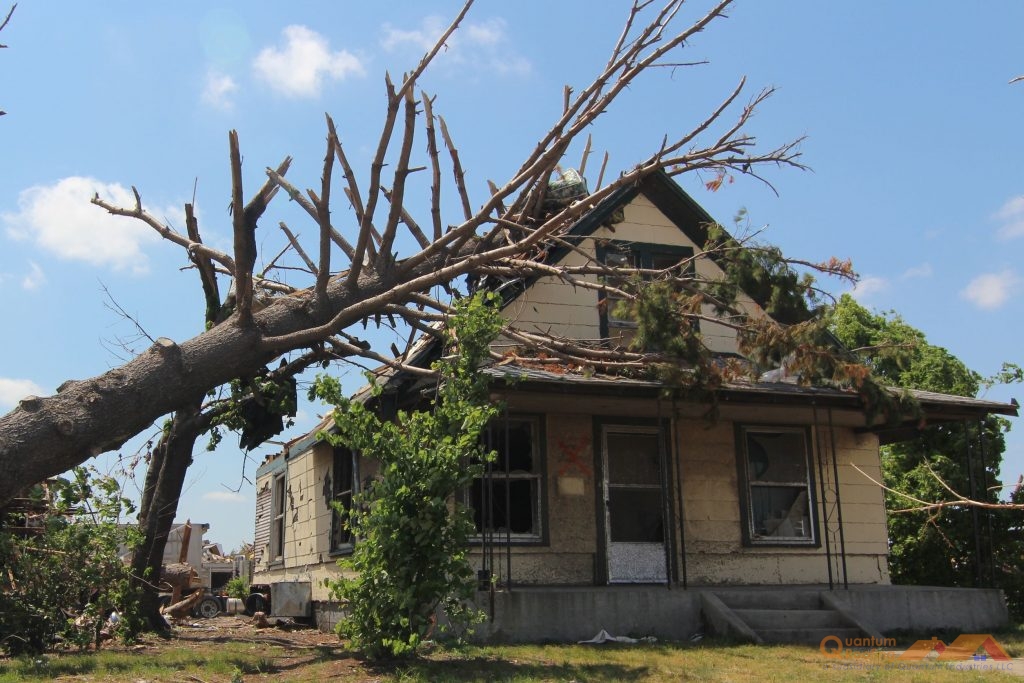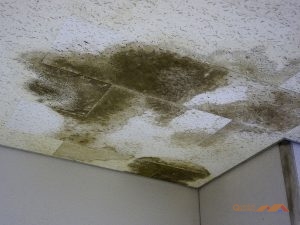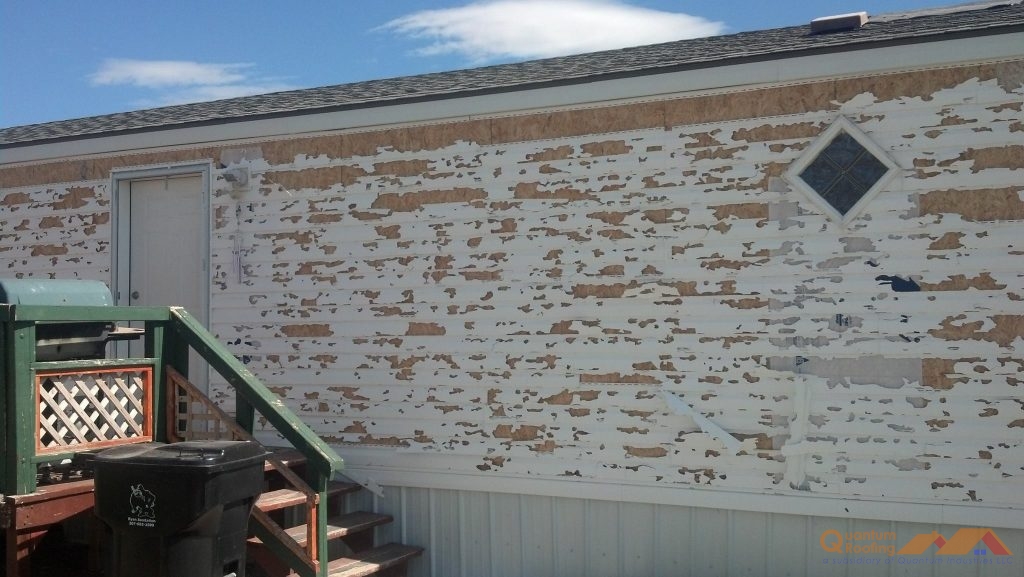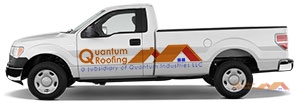As a homeowner, you may not where to begin when your home has storm damage. Through insurance claims, material lists, and contractors, you may even feel like your head is spinning a bit. Keeping calm and accurately assessing your damage is the key to getting your life back to normal fast. But, how do you know if you have roof damage? What other parts of the home should be checked? These are both common questions of homeowners who have recently experienced home damage.

Storms Can Damage Your Home in Multiple Ways, From Wind Damage to Falling Debris. Call Our Experts for Help.
Will Insurance Replace My Roof? What About Other Home Damages?
The fact is, homes are damaged every day. Whether or not your homeowner’s insurance will cover the damage depends heavily on how well your home was maintained prior to the storm. This means that a claims adjuster will visit your property to find out which damages are new, which are old, and whether your home has been properly maintained. For this reason, regularly scheduled home maintenance is imperative.
Your Roofing System
The main home component damaged in storms today is the roofing system. Shingles are easily damaged in wind and heavy rains, and often need extensive repair after severe hail. After a serious storm, it’s a good idea to inspect your entire roofing system to ensure that there are no damages. Perform a roof leak check throughout the material by spraying the surface with a water hose. While the hose is spraying water, check the attic for moisture, drips, and any other signs of new water entering the home. Also, check for water damage within the walls of your home to decipher between a roof leak or pipe leak. Without seasonal maintenance, pipes can burst within walls, causing large damage. However, a pipe leak will not produce water damage in the attic.
Can Roof Leaks be Fixed?

Roof Leaks Often Show Signs on the Ceiling and Upper Walls.
Depending on the severity of the leak, most roof leaks are able to be repaired by a roofing professional. These repairs may include:
- Resealing Flashing, Seams, and Joints
- Replacing Missing or Damaged Material
- Repairing the Undersheeting
However, roof leaks progress quickly. If not repaired in a timely manner, your small roof leak may turn into a big problem. Water easily seeps into damaged areas of your roof and begin to damage under areas like structural beams, insulation, and even walls and flooring. Once water has seeped into your underlayment, there is a good chance that it will need to be replaced which will involve removing all material from your roof.
Will Roof Leaks Cause Mold?
Roof leaks, left unrepaired, can lead to mold. This can create problems not only with air quality in your home but can also cause structural and wall damage to your home that can be very costly to repair. Because of the threat of mold in your home, roof leaks should be repaired quickly and efficiently.
How Long Do You Have to File an Insurance Claim After a Storm?
While every insurance provider sets its own time limit, most claims must be filed within 12-24 months. This is to protect the insurance provider from servicing multiple claims at once and additional damages caused by untimely repair.
The amount that your insurance policy will cover also depends on the damages compared to the condition of the roof. For example, if your roof is only a year old and is completely damaged, it’s likely you will receive enough for a whole new roof. However, if your roof is 14 years old and has had very little maintenance before it was destroyed by the storm, you may only receive half the cost of a new roof- the depreciated value of your roofing system. Check your homeowner’s policy carefully for regulations and guidance on this factor.
How Does Wind Damage a Roof?
Wind is one of the biggest hazards for roof systems. Because of how roof material is attached to your home, hard winds are sometimes able to penetrate the underlayer, causing the material to tear, protective asphalt to fall off, or the material to detach entirely. This is why roofs are “blown away” in windy conditions. While they are not actually blown away, some material may be blown off.
Other Post Storm Home Problems

Hail Can Seriously Damage Your Home’s Siding.
Along with your roofing system, many other problems can arise from a storm, although typically not as severe as roof damage. Still, it’s important to assess the damage throughout your home’s exterior to ensure that all of your systems and components are functioning properly. After a severe storm, inspect these areas:
- Siding: Wind, hail, and even heavy rain can bend, dent, and otherwise damage your siding. Check for holes, dents, and seam damages.
- A/C Compressor: Your A/C compressor could be damaged in a storm by falling debris or heavy hail. Check for fan hindrances and denting around the vent cage.
- Fencing: Fencing can be damaged in storms by heavy winds and hail as well. Check for leaning, denting, and dirt separation.
- Skylights: These above-head windows can develop leaks and other problems from hail and heavy rain. Inspect your skylight for seam damage and signs of cracking.
When a storm hits your Arden, NC home, you need a repair team with the knowledge and know-how to guide you through each process. If you need home repair or roof storm damage repair in the Arden, NC area, call the Quantum Roofing experts at 828-808-5955 to schedule your appointment. We provide the service you need to get your home back to normal fast.

